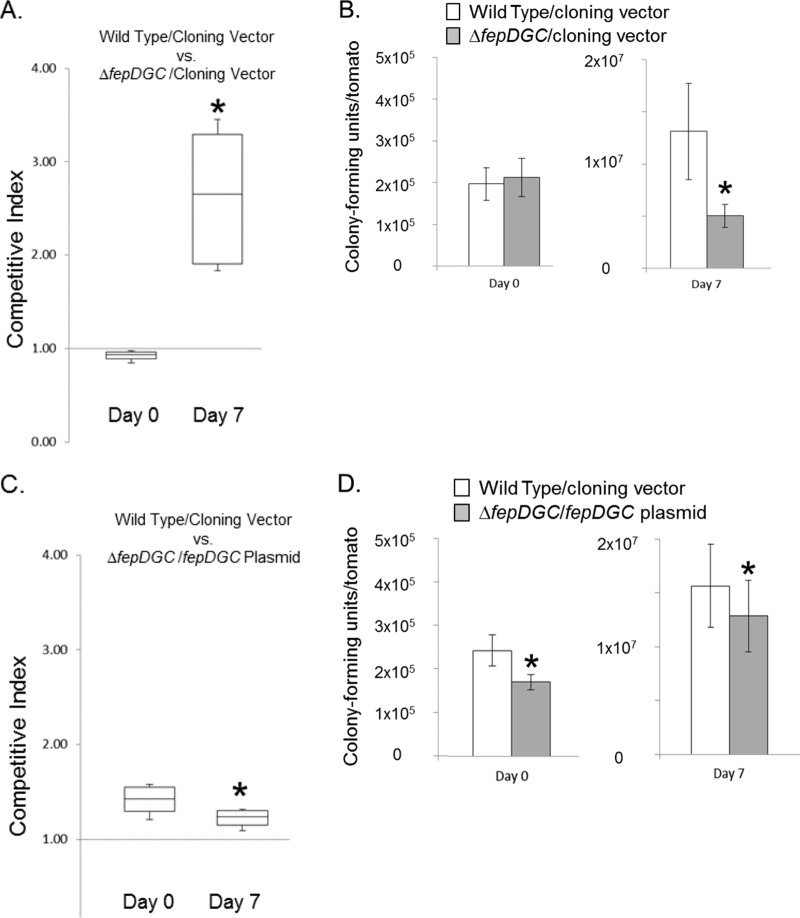FIG 2.
Complementation of fepDGC restores Salmonella viability in tomato fruit. (A and B) The wild-type and ΔfepDGC mutant strains carrying the identical cloning vector were inoculated together into red ripe tomatoes, with bacterial numbers determined immediately after inoculation (day 0) and 1 week later (day 7). The competitive index (CI) was measured as the ratio of wild-type to ΔfepDGC mutant cells, with a CI of >1 indicating a greater number of the wild-type cells. The numbers of cells of each bacterial strain were determined by colony-forming units per tomato, with white bars indicating the wild type and gray bars the ΔfepDGC mutant, both with the cloning vector. In a separate experiment (C and D), the wild type carrying the cloning vector was inoculated with the ΔfepDGC mutant carrying a fepDGC complementing plasmid and similarly treated. In both cases, a CI of >1 indicates a greater number of the wild-type than the ΔfepDGC mutant cells. Error bars indicate standard deviation from the mean, based on five independent biological replicates. Independent axes are used for the two time points for clarity. For each experiment, significance was determined through ANOVA at P < 0.05. The asterisk indicates a significant difference between cell numbers of the two strains.

